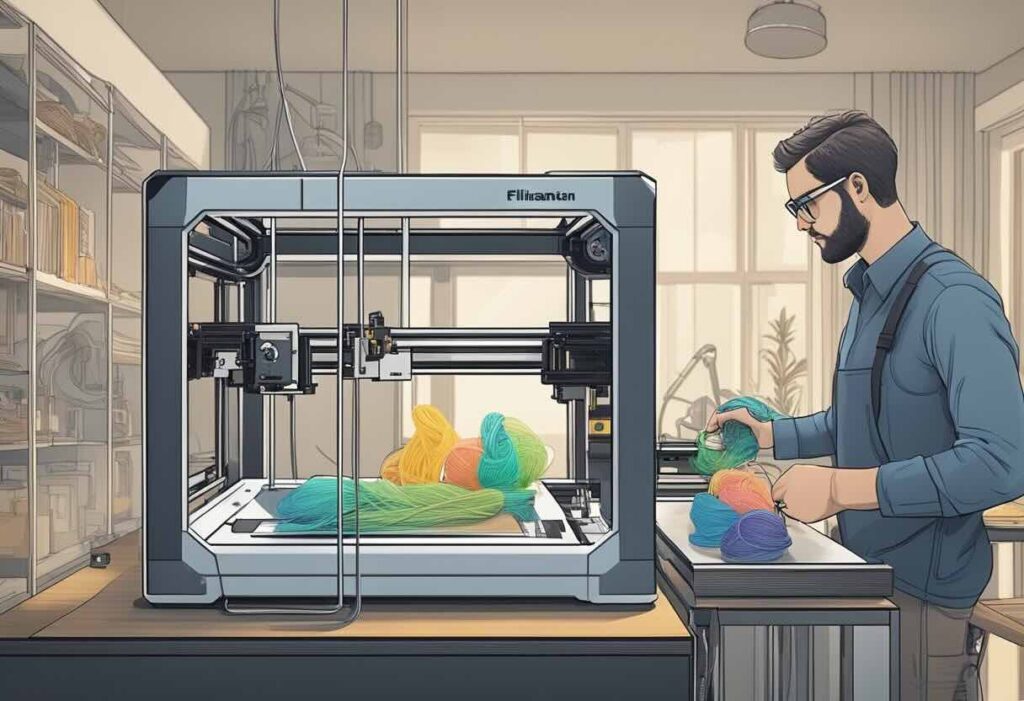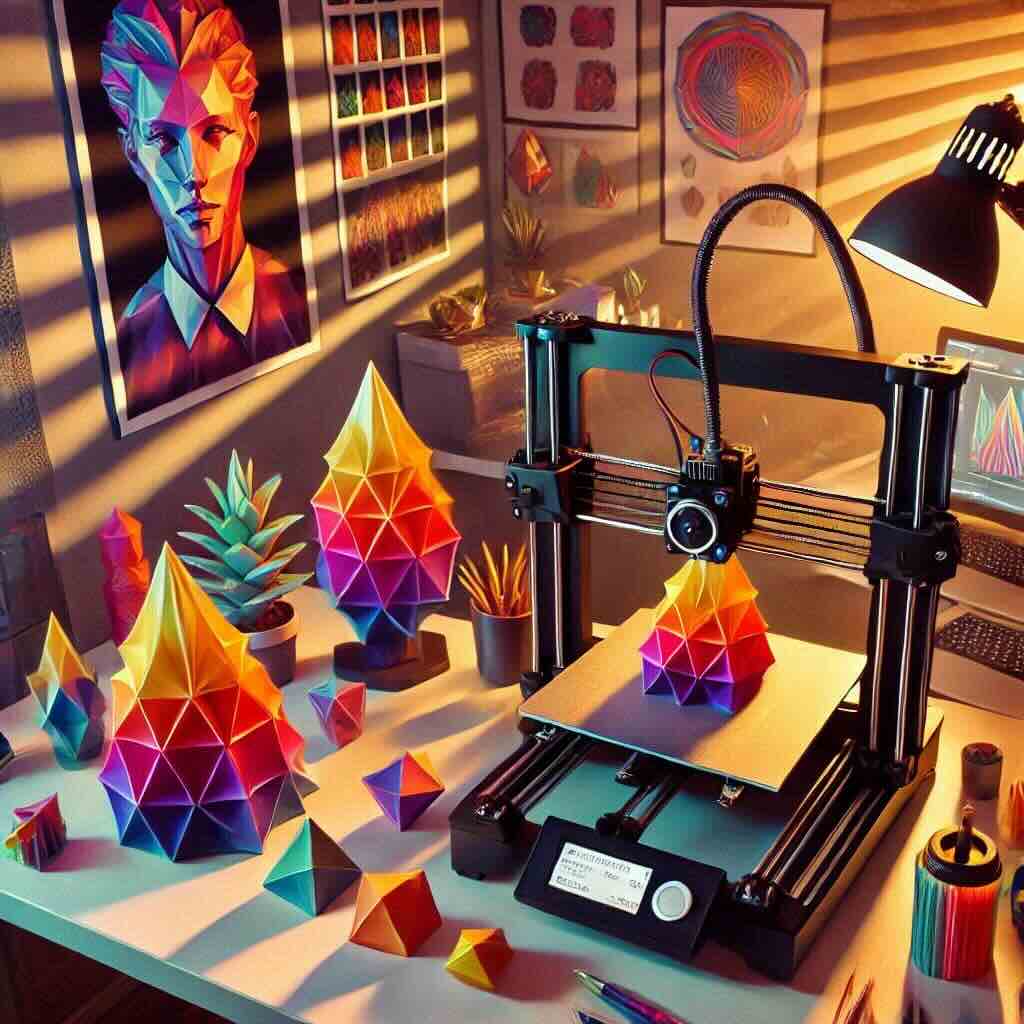Overview of 3D Printing Materials
3D printing has transformed from a niche hobby to a mainstream technology, enabling the creation of intricate models, prototypes, and functional parts. Two of the most commonly used materials for 3D printing are resin and filament, each offering unique properties that suit different applications.
To dive deeper into the technologies behind these materials, explore our articles on FDM 3D Printers: Understanding the Basics and Benefits for filament-based printing and Resin 3D Printers: How They Work and Their Extraordinary Benefits for a closer look at resin printing.
Why Resin and Filament are the Top Choices
Both resin and filament dominate the 3D printing world due to their versatility and widespread availability. Choosing the right one depends on factors such as precision, cost, and ease of use. In this article, we’ll explore their differences to help you make an informed decision.
- Which is Better for 3D Printing: Resin or Filament? A Detailed Comparison
- 2. What is 3D Printing Resin?
- 3. What is 3D Printing Filament?
- 4. Resin vs. Filament: Key Differences
- 5. Pros and Cons of Resin
- 6. Pros and Cons of Filament
- 7. Cost Comparison: Resin vs. Filament
- 8. Which Material Should You Choose?
- 9. Conclusion
Key Takeaways
In this article, you will learn:
- The key differences between resin and filament, including how they work, their properties, and their best uses.
- Which material offers better detail and surface finish and which is more durable and versatile.
- The pros and cons of resin and filament, including costs, safety, and ease of use.
- How to choose the right material for your projects, whether you’re a beginner, hobbyist, or professional.
- Practical tips for beginners and insights for professional applications in industries like art, engineering, and medical fields.
By the end, you’ll be equipped to make an informed decision that matches your 3D printing needs.
2. What is 3D Printing Resin?
Resin is a liquid photopolymer material widely used in 3D printing, particularly with SLA (Stereolithography) and DLP (Digital Light Processing) printers. This advanced material is cured layer by layer using UV light, creating precise and intricate models with exceptional detail. Here’s an in-depth look at resin’s versatility, properties, and applications.
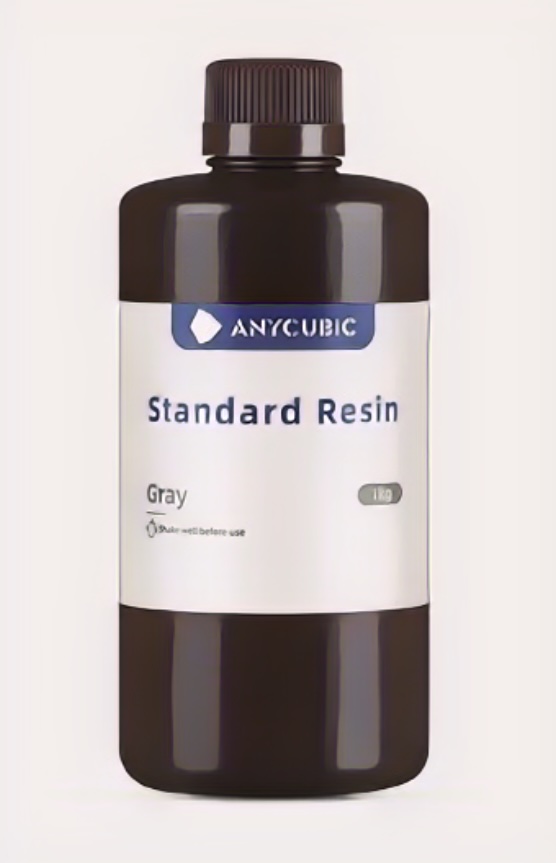
Types of Resins Available
Different types of resin are designed to meet specific needs, offering a variety of options for 3D printing enthusiasts and professionals:
- Standard Resins:
Standard resins are ideal for creating highly detailed prototypes and models. These are commonly used for aesthetic purposes, as they deliver smooth finishes but lack durability. Perfect for figurines, display items, and detailed artistic creations. - Tough Resins:
Designed to mimic the durability of materials like ABS plastic, tough resins are used for creating functional parts that need to withstand stress and wear. Engineers and designers often rely on tough resins for prototypes requiring mechanical strength. - Flexible Resins:
Flexible resins allow the creation of parts that can bend or compress without breaking. Applications include soft grips, wearable items, and flexible prototypes. This resin type is particularly useful for projects requiring elasticity. - Specialty Resins:
Specialty resins cater to niche applications, offering unique properties like heat resistance, transparency, or biocompatibility. - Castable resins:
They are commonly used to create molds for molten metal. It has gained a lot of popularity in fields such as jewelry.
Key Properties of Resin
Resin stands out for its ability to produce high-resolution prints, making it a favorite for projects requiring fine details. Its defining properties include:
- Exceptional Detail:
Resin prints are characterized by their smooth surface and the ability to capture minute details, which is difficult to achieve with other materials. This precision makes resin popular in industries like dentistry, jewelry design, and miniatures production. - UV Curing:
Resin solidifies when exposed to UV light during the printing process. While this ensures accuracy and precision, it also means post-processing steps like washing and curing are essential for a complete finish. - Smooth Surface Finish:
The liquid nature of resin allows it to fill and cure with minimal layer lines, delivering a smooth finish straight out of the printer. - Fragility:
While detailed, resin prints are often more brittle than filament prints, making them unsuitable for high-impact or stress-heavy applications unless tough or flexible resins are used.
Best Uses for Resin in 3D Printing
Resin is especially useful in applications where precision and aesthetics are critical. Here are some of its top use cases:
- Jewelry Design:
Resin’s ability to capture intricate details makes it ideal for crafting jewelry prototypes and molds. Designers can create highly detailed models that replicate complex designs with ease. - Dental Models and Prosthetics:
Dental professionals use resin for creating highly accurate dental models, surgical guides, and other biocompatible prosthetics. The precision of resin ensures a perfect fit and reliability in medical applications. - Miniatures and Figurines:
Hobbyists and artists often use resin for crafting miniatures, action figures, and collectibles. Its smooth finish and ability to capture small details make it an unmatched choice in this space. - Prototyping:
For projects requiring high-detail prototypes, resin is an excellent material, especially when aesthetics are as important as functionality.
By understanding the types, properties, and applications of resin, you can determine if it’s the right material for your 3D printing needs.

3. What is 3D Printing Filament?
Filament is a solid thermoplastic material that serves as the foundation for FDM (Fused Deposition Modeling) 3D printing. It’s fed into the printer, melted, and deposited layer by layer to build an object. Known for its versatility and affordability, filament is the go-to material for a wide range of applications, from hobbyist projects to industrial-grade parts. Here’s a closer look at the types, properties, and uses of filament.
If you’re new to 3D printing and want to explore how to choose the best filament for your needs, don’t miss our Choosing the Right 3D Printing Filament: A Beginner’s Guide for detailed tips and insights.
Types of Filaments Available
Filaments come in a wide array of materials, each suited to different needs and levels of expertise:
- PLA (Polylactic Acid):
PLA is one of the most commonly used filaments, especially for beginners.- Ease of Use: PLA is easy to print with, requiring lower temperatures and no heated bed in most cases.
- Biodegradability: Made from renewable resources like cornstarch, PLA is eco-friendly and biodegradable.
- Best For: Non-functional, aesthetic projects such as decorations, models, and toys. It’s less durable and heat-resistant compared to other filaments.
- ABS (Acrylonitrile Butadiene Styrene):
ABS is a durable and heat-resistant material favored for functional parts.- Strength: ABS offers superior toughness, making it suitable for parts exposed to wear and tear.
- Heat Resistance: Unlike PLA, ABS can withstand higher temperatures without deformation.
- Challenges: ABS requires a heated bed and proper ventilation due to the fumes it emits during printing.
- Best For: Prototyping, mechanical parts, and automotive components.
- PETG (Polyethylene Terephthalate Glycol):
PETG combines the best qualities of PLA and ABS.- Strength and Flexibility: PETG is more durable than PLA and less brittle, with a slight flexibility that adds robustness.
- Chemical Resistance: Resistant to water, chemicals, and UV exposure, making it suitable for outdoor use.
- Ease of Printing: While slightly more challenging than PLA, PETG is still user-friendly compared to ABS.
- Best For: Functional prototypes, water-resistant parts, and food-safe containers (if FDA approved).
- Specialty Filaments:
Specialty filaments are designed for specific aesthetics or advanced functionalities:- Wood Filaments: Contain wood particles, allowing for prints with a realistic wood-like texture and finish.
- Metal-Filled Filaments: Include metal powders like bronze or copper for a metallic appearance and added weight.
- Carbon Fiber Composites: Infused with carbon fibers for lightweight, high-strength parts ideal for industrial applications.
- Flexible Filaments (TPU/TPE): Suitable for creating rubber-like parts such as gaskets, grips, or wearable items.
- Best For: Advanced projects requiring unique finishes or specialized performance, such as art pieces, automotive parts, or lightweight structures.
Key Properties of Filament
Filaments stand out for their robustness and user-friendly nature, making them the most popular choice for 3D printing enthusiasts.
- Durability: Most filament types, such as ABS and PETG, are highly durable, making them ideal for functional applications. Even PLA, though less durable, is sufficient for decorative and light-use items.
- Affordability: Filament is one of the most cost-effective 3D printing materials, widely available in different types and colors.
- Ease of Handling: Filaments are generally straightforward to use, especially PLA, which is forgiving for beginners. Advanced filaments like ABS or PETG may require more fine-tuning but remain accessible.
- Print Size and Volume: Filament excels in creating large-scale models due to its physical robustness and compatibility with FDM printers, which have larger build volumes compared to resin printers.
- Customizability: Specialty filaments allow for tailored solutions, whether for aesthetic purposes or advanced functionalities.
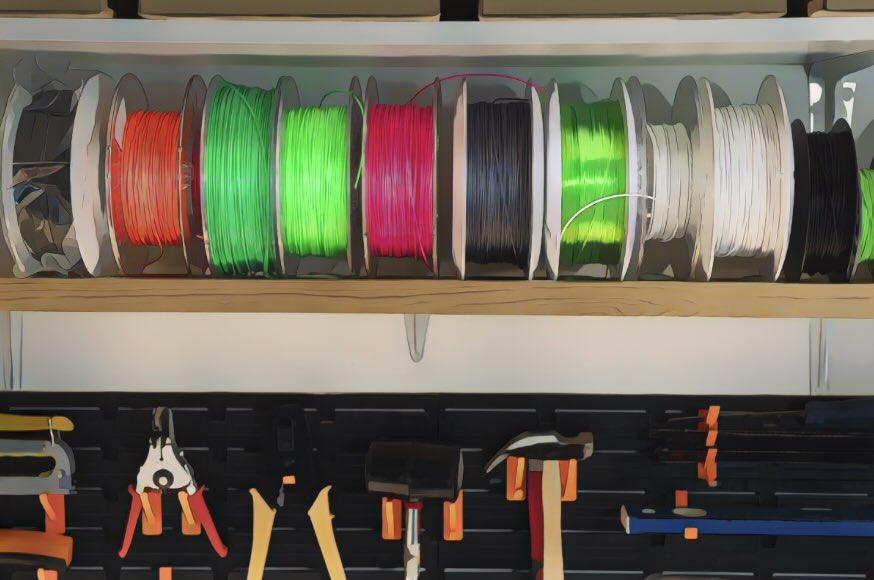
Best Uses for Filament in 3D Printing
Filament’s versatility makes it suitable for a broad range of applications, particularly those focused on practicality and structure:
- Prototyping and Functional Models:
Filament, particularly ABS and PETG, is widely used in creating prototypes and functional parts that need to withstand stress or mechanical use. Engineers and designers favor these materials for testing product designs. - Tools and Jigs:
ABS and tough specialty filaments are ideal for creating custom tools, fixtures, and jigs for manufacturing processes or DIY projects. - Structural Components:
PETG and carbon fiber composites are excellent choices for creating lightweight yet sturdy structural components, such as brackets or enclosures. - Hobby and Educational Projects:
PLA is perfect for non-functional hobbyist projects, school demonstrations, and decorative pieces. Its ease of use and affordability make it accessible for beginners.
By choosing the right filament for your project, you can achieve reliable and high-quality prints tailored to your specific needs.
4. Resin vs. Filament: Key Differences
When deciding between resin and filament, it’s crucial to understand how these materials and their respective printing processes differ. Each has unique strengths and limitations, making them suitable for different applications. Let’s dive deeper into the key distinctions.
Printing Process: How Each Material Works
The core difference between resin and filament lies in how the materials are processed during printing:
- Resin Printing:
Resin printers, such as SLA and DLP models, use UV light to cure liquid resin layer by layer. This process is highly precise, enabling intricate designs and exceptional surface detail. However, resin printing can be time-intensive and involves meticulous preparation and post-processing. - Filament Printing:
Filament printers, typically FDM models, melt and extrude plastic filament through a nozzle to create objects layer by layer. This process is straightforward and faster than resin printing but lacks the fine detail and smooth finish of resin prints.
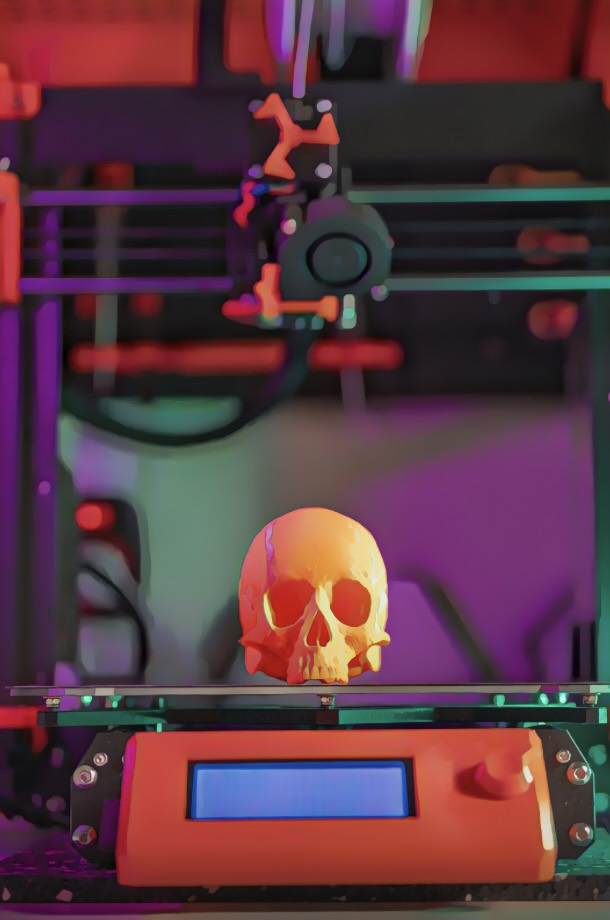
Surface Finish and Detail
- Resin: Resin prints excel in achieving smooth, flawless finishes and unparalleled detail, making them ideal for projects where aesthetics are critical.
- Filament: Filament prints typically have visible layer lines, especially on curved surfaces. While this can be mitigated through post-processing techniques like sanding or acetone smoothing (for ABS), the results often require more effort.
Durability and Strength
- Filament: Materials like ABS, PETG, and carbon fiber composites offer excellent durability, impact resistance, and flexibility, making them ideal for functional and structural components.
- Resin: While resin produces detailed prints, it is inherently more brittle than filament, especially standard resins. Tough and flexible resins are available but still do not match the durability of filament materials.
Ease of Use and Setup
- Filament Printers: Filament printers are generally more user-friendly, requiring less maintenance and setup. Loading the filament and initiating the print is straightforward, making it a favorite among beginners.
- Resin Printers: Resin printers demand more effort, including careful handling of the liquid resin, post-curing, and safe disposal of waste. Additionally, resin printing requires a well-ventilated space and protective gear, such as gloves and masks, to ensure safety.
5. Pros and Cons of Resin
Resin is a powerful material in 3D printing, offering unique advantages for specific applications. However, it comes with its own set of challenges.
Advantages of Resin for 3D Printing
- High Resolution and Detail: Resin printers are unparalleled in producing fine details, making them the best choice for intricate designs.
- Smooth Surface Finish: Resin prints require little to no post-processing to achieve a professional, smooth surface.
- Ideal for Complex Designs: Resin is ideal for capturing fine features like interlocking parts, sharp edges, or thin structures.
Disadvantages of Resin for 3D Printing
- Expensive and Less Durable: Resin itself is costlier than filament, and prints are often more brittle unless tough resins are used. This makes it less ideal for functional or stress-bearing parts.
- Requires Post-Processing: Resin prints must be cleaned, cured, and sometimes sanded after printing, adding time and effort.
- Handling and Safety Concerns: Liquid resin is toxic and requires careful handling, including the use of gloves, masks, and a well-ventilated workspace. Waste disposal also requires adherence to safety regulations.
Resin’s strengths lie in its detail and aesthetic potential, but its challenges mean it’s better suited for experienced users or projects requiring its specific qualities.
6. Pros and Cons of Filament
Filament is the most commonly used material in 3D printing, particularly with FDM printers. Its affordability and versatility make it a popular choice for beginners, hobbyists, and professionals alike. However, like any material, it has its strengths and limitations.

Advantages of Filament for 3D Printing
- Affordable and Widely Available:
Filament is one of the most cost-effective 3D printing materials. With prices ranging from $15 to $50 per kilogram for common options like PLA, PET-G and ABS, it’s accessible to most users. Additionally, it is widely available both online and in stores, ensuring a steady supply. - Durable and Versatile:
Many filament types, such as PETG and ABS, are known for their durability and strength, making them suitable for creating functional parts. Specialty filaments like carbon fiber composites or wood-infused filaments add further versatility, enabling users to tailor materials to specific needs. - Easy to Handle and Store:
Filament is easy to work with, requiring minimal safety precautions. It doesn’t require protective gear like resin, and proper storage in a dry environment can extend its shelf life. This makes it a user-friendly option for beginners.
Disadvantages of Filament for 3D Printing
- Visible Layer Lines:
One of the biggest drawbacks of filament is that FDM prints often have visible layer lines. These lines can detract from the aesthetics of a project, especially if the print requires a polished or professional appearance. While techniques like sanding or acetone smoothing (for ABS) can minimize lines, they add extra steps to the process. - Limited Resolution for Intricate Designs:
Filament printers struggle with intricate details and fine features due to their lower resolution compared to resin printers. This makes them less ideal for projects requiring extreme precision or smooth surfaces.
7. Cost Comparison: Resin vs. Filament
When considering the cost of 3D printing, the choice between resin and filament can have a significant impact on your budget. While filament is generally more economical, resin’s additional costs for post-processing and safety equipment can add up quickly.
Price Per Kilogram for Resin and Filament
- Filament:
Filament materials like PLA, ABS, and PETG typically range between $15 and $50 per kilogram. Even specialty filaments like carbon fiber-infused or metal-filled options rarely exceed $100 per kilogram, making filament a cost-effective choice. - Resin:
Resin prices are significantly higher, averaging between $30 and $150 per kilogram, depending on the type. Specialty resins, such as those with heat resistance or biocompatibility, can be even more expensive.
Overall Costs for 3D Printing Projects
- Filament Projects:
Filament projects are generally more budget-friendly, requiring only the filament material itself and minimal additional equipment. Post-processing tools, such as sandpaper or acetone, are inexpensive and easy to acquire. - Resin Projects:
In addition to the higher cost of resin, projects often involve added expenses for items like UV curing stations, isopropyl alcohol for cleaning, and protective equipment. These requirements can make resin printing significantly more expensive overall.
Understanding the cost implications of resin versus filament can help you choose the material that aligns with your project’s budget and requirements. For most users, filament offers a more accessible entry point into 3D printing, while resin caters to specialized needs that justify its higher expense.
8. Which Material Should You Choose?
Choosing between resin and filament for your 3D printing projects can seem daunting, but understanding your specific needs and goals can make the decision much easier. Below, we’ll dive deeper into how to determine the right material based on your project type, offer actionable tips for beginners, and highlight which material is best suited for professional applications.
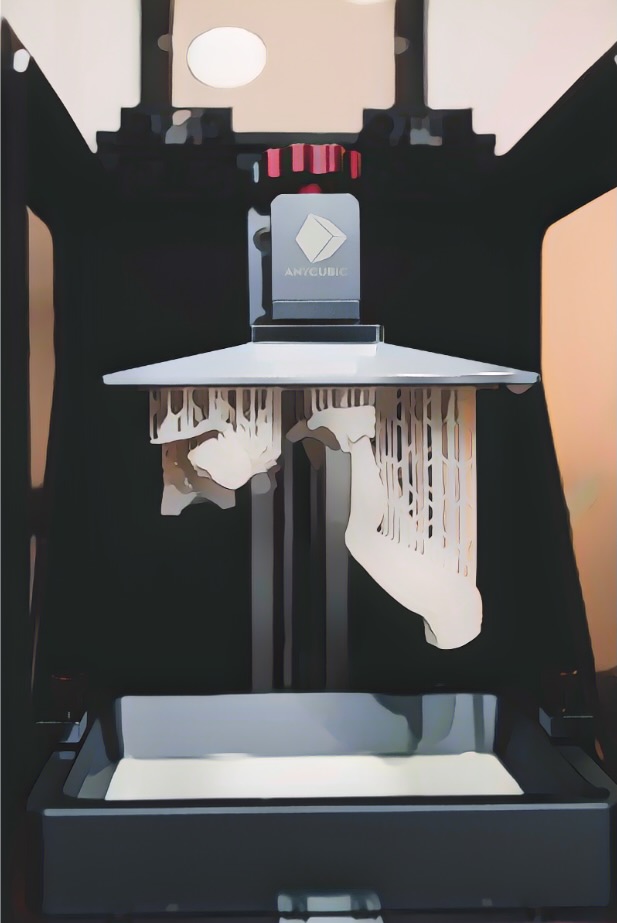
Choosing Based on Your Project Type
The type of project you’re working on is a key factor in determining the best material to use. Let’s break it down:
- Precision and Aesthetics:
Resin is the superior choice when your project requires intricate details, smooth finishes, and a high level of precision. Resin printers excel in creating professional-grade models with a level of finesse that filament printers cannot match. - Functional and Durable Models:
Filament materials, especially tough options like PET-G and ABS, are ideal for functional parts that need to withstand stress or environmental conditions. The durability and versatility of filament make it perfect for prototyping, tools, and outdoor use.
Tips for Beginners
If you’re just getting started with 3D printing, choosing the right material can set the tone for your experience. Here are actionable tips to help you succeed:
- Start with Filament:
Filament is more forgiving for beginners due to its affordability and ease of use. Unlike resin, it doesn’t require specialized post-processing equipment, making it a budget-friendly option for those new to the craft.- Actionable Tip: Begin with PLA filament, as it’s biodegradable, easy to print with, and widely available. Practice printing simple objects like keychains or coasters to get familiar with your printer.
- Learn the Basics of Maintenance:
Filament printers are straightforward to maintain, which is another reason they’re ideal for beginners. Focus on keeping the nozzle clean and ensuring the print bed is level to reduce errors.- Actionable Tip: Invest in basic tools like a nozzle cleaning kit and a bed scraper. These will help you resolve common issues without frustration.
- Experiment Gradually with Resin:
If you’re eager to explore resin printing, start small with a beginner-friendly MSLA printer and standard resin. Practice handling and curing resin safely before attempting complex projects.- Actionable Tip: Use gloves, goggles, and a well-ventilated workspace to handle resin safely. Try creating small, detailed prints like jewelry or figurines to hone your skills.
Professional Applications: Which Material Works Best?
Professionals in different fields may find one material more advantageous than the other based on their unique requirements. Here’s a breakdown of how resin and filament cater to professional applications:
- Engineering and Prototyping:
Filament is the go-to choice for engineers and manufacturers who need to produce functional prototypes or end-use parts. Its durability, heat resistance, and ability to create large, robust components make it indispensable in these fields. - Art and Design:
Artists, jewelers, and designers often choose resin for its ability to produce high-resolution, aesthetically pleasing models. The precision of resin printing ensures every detail of their creative vision is realized. - Dental and Medical Fields:
Resin’s biocompatibility makes it ideal for producing dental models, surgical guides, and other medical tools. Professionals in these industries benefit from resin’s precision and ability to meet strict hygiene standards.

9. Conclusion
Summary of Key Differences
Resin offers unmatched detail, while filament excels in durability and ease of use. Your choice depends on the specific requirements of your project.
Final Thoughts on Choosing Resin or Filament
Both materials have their strengths and limitations. By understanding their properties, you can select the one that aligns best with your goals, whether you’re a beginner or a seasoned professional.
To summarize:
- Choose Resin If:
- Your project demands fine detail and smooth finishes.
- You’re working in fields like art, jewelry design, or medical applications.
- Choose Filament If:
- You need durable, functional parts or are just starting with 3D printing.
- Your projects involve large-scale prototypes or practical tools.
By aligning your material choice with your project needs and skill level, you can optimize your 3D printing results and make the most of your investment.
